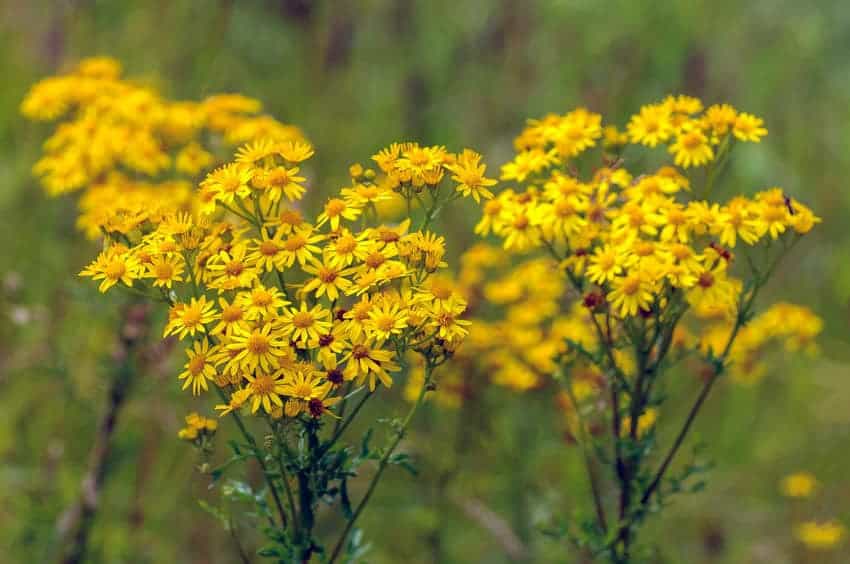Ragwort: what every horse owner should know

Every horse owner knows ragwort is highly toxic to horses, but do you really know the facts behind this deadly plant? Vets David Langrish and Jo Dyson from Animed Vets answer H&C’s questions.
What does ragwort look like?
The young plant is found from early spring onwards. The distinctive dense rosette of leaves are deeply dissected with ragged edges – hence the name. The plant produces yellow flowers from May to October and can reach up to two metres in height.
It may be prudent to collect a plant now and dry it so that you will recognise the different parts of the dried plant in hay should it be present (see below).
It is true horses will only eat ragwort once it has died?
Horses in adequate pasture do not tend to eat fresh ragwort but will eat it if grazing is sparse. Horses will more readily eat dried ragwort in hay – so you should always carefully check your hay for the plant.
What happens to a horse if he eats it?
Ragwort contains pyrrolizidine alkaloid. This is non-toxic, but once absorbed through the gut it is converted into toxic activated pyrrole by the liver. There is progressive damage to the liver causing it to shrink. Damage to the heart and lungs of affected horses has also been documented.
Will my horse get ill if he occasionally eats a mouthful of ragwort?
Repeated small doses will cause poisoning. However, some horses may be more tolerant to ragwort toxins than others.
What are the early signs of poisoning?
There are few early signs of poisoning. Clinical signs of the disease do not appear until weeks or months after the onset of plant consumption.
However, in some case horses will have:
- Decreased appetite
- Mild weight loss
- Colic
- Diarrhoea or constipation and straining
- Incoordination
- Yawning
Clinical signs often do not occur until the end stages of the disease, when horses go into liver failure.
Once liver disease has progressed neurological signs associated with liver failure appear. These include dragging hind limbs, aimless walking in the field or stable, head pressing (often against a stable wall) and ataxia (wobbliness).
Can the damage be reversed?
The liver can regenerate to a certain extent, but due to the type of damage to the liver cells this is very limited, therefore survival is extremely rare. Damage to the liver is irreversible and generally fatal. However, rare case of survival have been documented.
What should I do if I suspect my horse has eaten ragwort?
If ragwort poisoning is suspected then a blood test should be taken to measure liver enzymes. If these are repeatedly high then a liver biopsy should be performed and this can confirm ragwort poisoning. Repeated blood samples should be taken in suspected cases as abnormalities in the liver enzymes can wax and wane in the earlier stages of disease.
The horse should receive treatment aimed at supporting the liver function and keeping the horse comfortable.
How can I get rid of ragwort?
Ragwort can be controlled by hand removal – it is essential you pull up the roots as well – or the application of herbicides and removal of the dead plants (contact the Ministry of Agriculture for advice). Horses should be kept off sprayed pasture until the weeds are removed, as the plants are more palatable when wilted.
Did you know? Under the Weeds Act 1959, the occupier of land is responsible for clearing ragwort. This could be a landowner, yard manager, tenant or livery client. If you’re unsure of whether ragwort control is your responsibility on your yard, check your contract.






